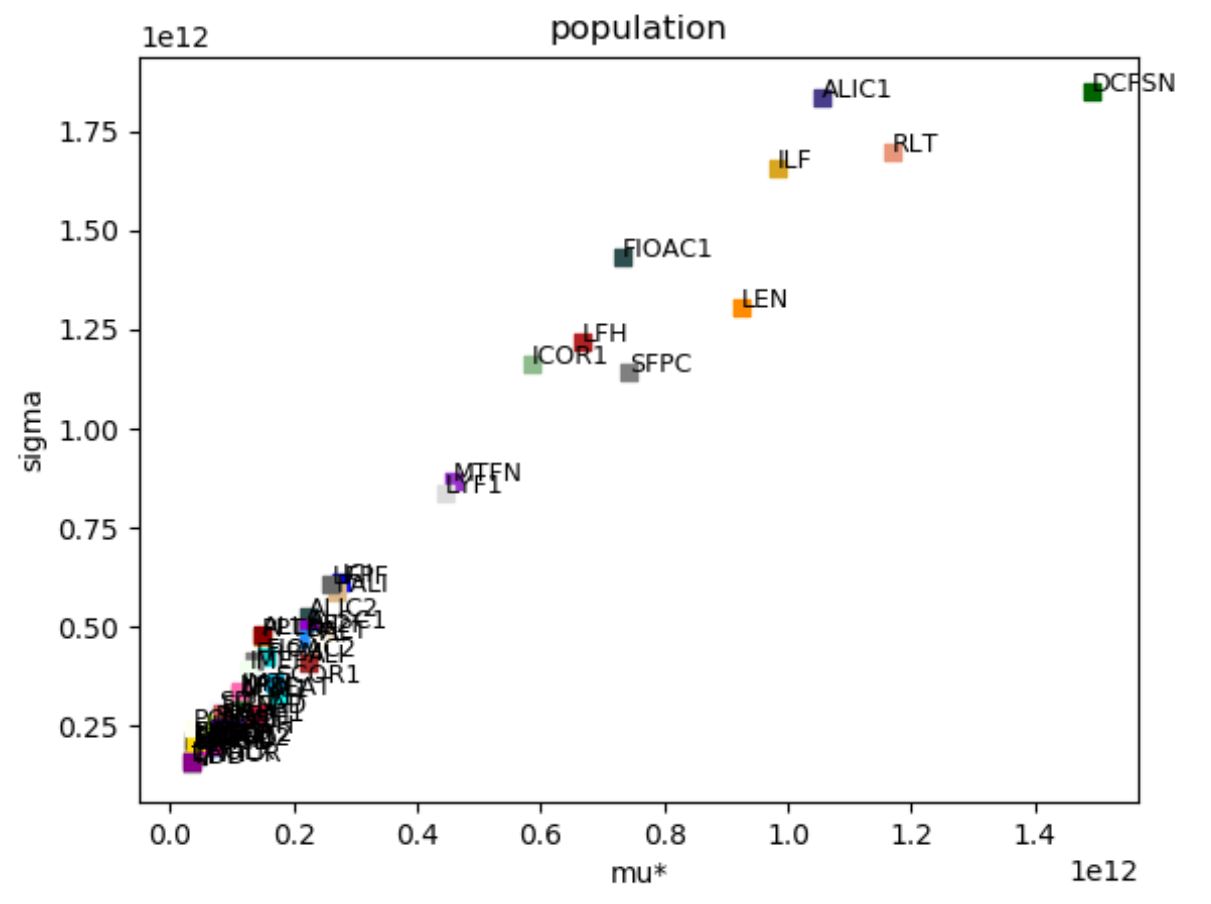Funding : Action Exploratoire INRIA
Period : 2020-2024
Abstract
The aim of this project is to develop methodologies and tools for estimating global systemic risks, as well as elements of strategic analysis for mitigating or adapting to these risks, for use by the public and private sectors. Global risks are linked to environmental problems and their connections with and between numerous sectors of human activity and different economic, societal and (geo)political dynamics.
Context
Modern societies are characterized by a very high level of interconnections between numerous sectors, notably economic, social and geo-political, as well as by the environmental impacts of human activity and their negative consequences for societies themselves. These widespread interconnections, as well as the links between human activity and environmental destruction, give rise to intrinsic risks, known as systemic risks, due to the feedbacks present between all parts of the global socio-environmental system.
These risks represent serious threats to modern societies, and collapse is one of them. The question of systemic risks is an important one for the STEEP team, whose core focus is on sustainability issues at different spatial scales. The ability of territories, states, the international community and the private sector to cope with this type of risk is one of the central elements conditioning sustainability, but one that has so far remained outside the team’s scientific sphere of activity.
From the point of view of the broad categories of processes involved, global systemic risks can be grouped into two categories:
- “Trend” risks, linked to long-term trends (several decades) in our globalized socio-ecosystem. They are essentially due to the growing tension between our use of resources, our production of varied and often diffuse pollution, and the capacity of our (semi-)natural environment to absorb the associated impacts, as well as to the consequences of induced environmental changes on said socio-ecosystem. These risks are both amplified and underpinned by specific socio-political, economic and historical dynamics.
- Systemic “contagion” risks, shorter-term (weeks or months) but intermittent and random. This type of risk is linked to the very high level of global interconnections between numerous sectors of human activity, to the intrinsic instabilities generated by these interconnections, and to their possible propagation by domino effect in all sectors of society. These risks are intensified by current geopolitical dynamics, and by worsening environmental problems.
Project
The emblematic model of the first category is the World3 model developed by the Meadows Group for its famous report on the limits to growth. Turner’s re-analyses have renewed interest in this model, while raising more specific questions about the robustness of the conclusions drawn from it. We intend to answer these questions with an analysis on three complementary fronts:
- An analysis of parameterization choices based on a sensitivity analysis that is far more refined than existing ones.
- An analysis of modeling choices based on a sectoral and geographical disaggregation of the model.
- Elements of epistemological analysis.
In terms of systemic contagion risks, and although an exhaustive analysis of all potential risk categories is impossible in an exploratory phase, the energy/finance/supply chain nexus plays a particular role in our societies and presents a specific criticality. Sectoral or cross-sector analyses of certain aspects of this nexus already exist in the literature, but apparently no overall model has been produced on this subject, and in particular no dynamic model. This in itself would be a significant step forward.
More specifically, the planned work concerns:
- Identify and model the most important feedback loops in the coupled energy/supply chain/logistics/finance system.
- Estimate the likelihood of failure of the various links (in particular, identify the most fragile).
- Assess the systemic impacts associated with the risk of failure of specific links; Identify critical links.
- Define mitigation strategies for the most critical risks.
Contacts
| Pierre-Yves Longaretti Pierre-Yves.Longaretti@inria.fr STEEP – INRIA Grenoble | Emmanuel Prados Emmanuel.Prados@inria.fr STEEP – INRIA Grenoble | Serge Fenet Serge.Fenet@inria.fr STEEP – INRIA Grenoble |


